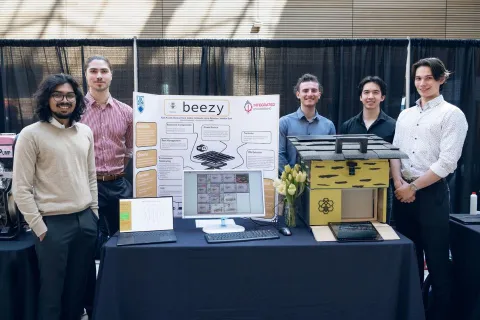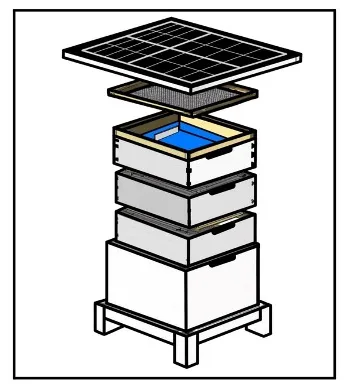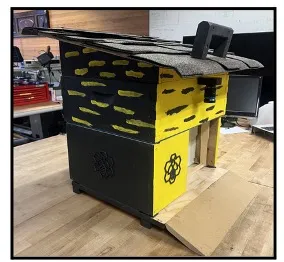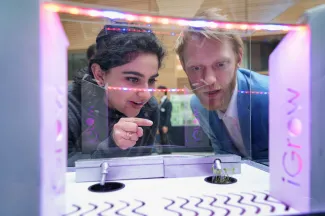
Cullen Jamieson, Duncan Ford, Karl Arcadi, Lucas Petersen and Sanskar Soni
- Degree:
- Bachelor of Applied Science
- Program:
- Campus: Vancouver
Our design solution
We developed user requirements based on comprehensive interviews with people involved in beekeeping, including representatives from the government (notably the chief beekeeper of BC), the industry and professional engineers.
This feedback led us to develop a modular, roof-based system compatible with existing Langstroth hives, which are the most commonly used hives in the industry. The design incorporates two distinct systems, the Hive Management System (HMS) and the Varroa Mite Management System (VMMS). The HMS uses an array of sensors to collect hive-specific data like temperature, humidity, and carbon dioxide levels. The VMMS employs an external camera equipped with computer vision to detect mites on bees entering and exiting the hive. Powered by solar energy, the self-contained system is easy to install and maintain.

We encountered some hurdles in the development process. An early challenge was getting the various sensors and components working on a single processor. Additionally, the task of relaying the gathered data to an offsite web server or database for beekeeper accessibility was complex.
Another significant challenge was the process of training the system to detect the Varroa mite. Integrated Engineering does not require students to take courses in machine learning or computer vision, and these technical elective courses are typically taken during the final year of studies. Some of our team members taught themselves the basic knowledge required to devise a system capable of identifying mite-infected bees.
Finally, it was challenging to design the end product so it could conveniently house all the components within the spatial constraints while being easy to attach and remove from the hive.
Our project’s future

The data collected by beezy’s sensors will enable beekeepers to have a much better understanding of the variables affecting their bees so they can make data-informed decisions to ensure hive health. We’ll present the project to the professionals we consulted with at the start of the project and perhaps integrate their feedback into future iterations. The final design will be placed on a hive this summer, marking the real-world test of the beezy solution.






